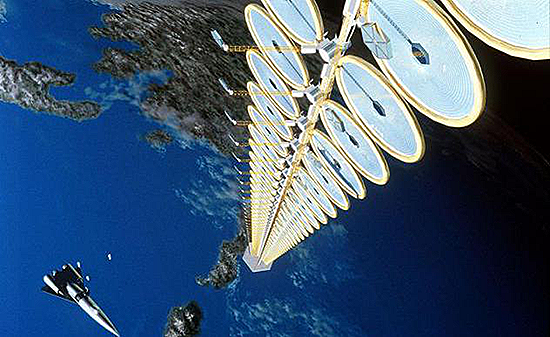
The pace of technological change is governed by many factors - including public demand. Which is why we need to be demanding more. Here are 12 transformative technologies whose development should be expedited right now.
To make this list meaningful, I only included those items that are within reasonable technological reach. Sure, it would be nice to have molecular assemblers, warp drives, and the recipe for safe artificial intelligence, but it'll be decades before we can reasonably embark upon such projects. What's more, there are more pressing things to address in the near term. To that end, here's what we should be working on:
1. A Viable Artificial Biosphere
Before we can venture out into space and build long-term space habitats, we have to figure out a whole bunch of stuff, including how to make viable and self-sustaining artificial biospheres. To date, our efforts to construct a biosphere - from the pioneering efforts of the Soviets and their BIOS-3 experiments to the Biosphere 2 projects of the 1990s - have largely been met with failure. It's now 2014 and we still haven't got a clue as to how we can build an artificial, materially closed ecological system for human habitation - a disturbing realization given the sorry state of our environment and our future plans in space. The time has come for us to reboot these crucial projects.
2. 3D Bioprintable Vaccines

Imaging having one of these in your home. This particular device was developed by Organovo Holdings.
In conjunction with Autodesk, it wants to develop the first 3D design software for bioprinting.
West Africa's current Ebola epidemic is a sober reminder that we're only a mutation or two away from a larger world-scale catastrophe. But DNA sequencing techniques are getting progressively faster, and with it, the potential for biologists to decode the genetic blueprints of viruses. Armed with this information, they could theoretically develop a vaccine in as little as 24 hours. The problem, of course, is mass producing these vaccines, distributing them to those in need, and doing it in a way that doesn't facilitate further propagation of the virus.
Biotechnologist Craig Venter has envisioned a remarkable solution to this problem, what he calls "a 3D printer for DNA." He imagines the day when viruses like Ebola or H1N1 can quickly be digitized and emailed as data to research labs for immediate analysis. In turn, they would post the specs of the vaccine online for people to download to their 3D bioprinters. People could print out the vaccine, administer it themselves - and all without having to leave their homes.
3. Genuine Anti-Aging Interventions
A quick Google search for "anti-aging" pulls up no less than 21,600,000 results - which is pretty darned interesting considering that no single anti-aging intervention actually exists. Well, to be fair, we know of at least one thing you can do to ever-so-slightly slow down the aging process: caloric restriction. There are several other interventions, but they've only been shown to work in mice. What's more, they only change the pace of aging - it isn't true rejuvenation.
Now, while the medical world collectively works to overcome individual age-related diseases, virtually no one is looking at the big picture. Biogerontologist Aubrey de Grey, architect of the SENS approach to aging, says that's a problem. Here's what he told me via email:
Billions of research dollars are spent every year on attempts to develop cures for the diseases of old age, such as Alzheimer's, type 2 diabetes and atherosclerosis, Far greater amounts are spent managing those diseases with the inadequate tools we have today, and greater sums even than that are lost as a result of the failure of such therapies to actually work. What are we doing wrong? Amazingly, there is a simple answer. These diseases are not like infections that can be eliminated from the body: actually they are side-effects of the way the body works, resulting from the damage that any machine with moving parts inevitably does to itself in the course of its normal operation. In other words, they are part and parcel of aging. We will only ever eliminate those diseases by recognising that fact, and by tackling the whole of aging with one coherent panel of interventions.
That approach will not only consign those diseases to history: it will also prevent the gradual decline in mental and physical function that we typically call "aging itself". The result will be truly indefinite youth. This will have a welcome side effect: people will live, in that youthful state, much longer than today, since their risk of death will not rise with age. We will thus save astronomical numbers of lives - 100,000 people die every day from aging - as well as preventing 90% of the ill-health and consequent suffering that humanity endures today. What could be more urgent?
4. Synthetic Meat
The global demand for meat is steadily rising. It's a trend that's sure to result in increased environmental pollution, energy consumption, animal suffering, and the proliferation of animal-borne diseases. This is why lab-grown meat is increasingly being seen as a potential solution despite the "yuck" response that typically accompanies the prospect. Indeed, as illustrated in a Times editorial last year: "'How absurd is it to imagine all our meat one day being produced by a similar process [tissue culturing]? Not much more absurd than it is to imagine all our meat continuing to be produced as it is now." Work is being done in this area, but not enough given what's at...uh...steak.
5. Space Elevator
We have to figure out a better way to get ourselves and all of our stuff into space. Back during the Space Shuttle era, each mission cost US$450 million. NASA's upcoming Space Launch System is headed in the wrong direction, with estimates as high as US$500 million per launch. SpaceX's Falcon Heavy is considerably better, but still not great at US$83 million per launch (which calculates to US$709 per pound to LEO). What's more, rockets - and the gasses they leave behind - aren't entirely clean.
A space elevator, on the other hand, would be comparably cheap once it's set up and active. Space wouldn't seem so far away and inaccessible. Sure, it won't be easy building one (as we've discussed at length), but there's cause for hope, including that incredible new nanothread weaved from microscopically small diamonds - a wonder material that appears stronger than carbon nanotubes.
6. Space-Based Solar Power
If we assume that economic progress and globalization continues apace, we'll need to produce twice the amount of energy consumed today by the 2030s. That's a whopping 22 trillion kilowatt hours per year. And by the end of the 21st century we'll need four times the current rate of consumption. At the same time, we have to end our reliance on fossil fuels, a non-renewable resource that's contributing to climate change. There are a number of proposals on the table for how we may address these challenges, including nuclear fusion and massive arrays of concentrated photovoltaic cells.
But there's one solution that rises way above the rest: space based solar power. Though many different ideas have been proposed, the basic concept remains the same: Set up large photovoltaic platforms in Earth's orbit and beam the extracted energy down to receiving stations back on land in the form of microwaves that can be converted into electricity. Japan's space agency is so excited by the prospect that they're planning on deploying a system by the 2030s. It'll be difficult and expensive to build, but the payoffs will be immense.
7. Reliable Measures of Individual Rationality
Intelligence and rationality are two very different things. As Idea Couture Foresight Strategist Jayar LaFontaine told me, high scores on intelligence tests are only a moderate predictor of the capacity to exhibit good judgement and to base one's beliefs on appropriate evidence. A person might be very smart, he says, but at the same time prone to poor belief formation and judgement. It's what psychologist Keith Stanovich calls dysrationalia.
As LaFontaine noted to me in an email:
The good news is that, while intelligence appears to be relatively stable and unchanging throughout an individual's lifespan, it seems rationality might be improved through training and education. Stanovich and his co-investigator Richard West are working on developing an RQ (rationality quotient) test that could be used to reliably assess individual rationality. We could use this test to measure the efficacy of different interventions aimed at improving human reason. With luck, we may discover avenues for improving individual rationality that could become part of standard curriculum in the future.
The changes in human society this would trigger are difficult to anticipate, but we can already see how this might change things in the present. Take public policy. Governments have long depended on a "carrot vs. stick" approach to public policy: subsidize good behaviours, penalize bad ones. "Nudging" is a growing third approach to encouraging good behaviours and decision-making among citizens. By both building the environment and presenting information in certain ways, the thinking goes, we can provide unconscious cues, or nudges, for people to choose certain preferable options over others without prohibiting or incentivizing any particular choice.
But if individual human rationality is improvable, then perhaps policymakers don't need to build unconscious nudges into the world. As an alternative, we could provide the evidence-based education and training necessary for individuals to make better decisions on their own.
8. Effective and Safe Geoengineering
At this point in our history, and precedents being what they are, it doesn't appear that we're going to curb carbon emissions. It probably doesn't even matter anyway - we may have already passed the tipping point. As a NOAA-led study explained back in 2009, "changes in surface temperature, rainfall, and sea level are largely irreversible for more than 1,000 years after carbon dioxide (CO2) emissions are completely stopped."
Consequently, we may have no choice but to engage in the practice of geoengineering - like making clouds more reflective, building giant space reflectors, engaging in ocean fertilization, and producing giant air purification systems that suck excess carbon dioxide out of the air. Sadly, this will prove to be a monumental challenge. The error for margin is miniscule, while the potential to exacerbate deleterious environmental conditions is great. Moreover, once we start, we probably won't be able to stop. But given that we're already feeling the effects of climate change, we should probably get on this.
9. Gene Drives
The mosquito is the deadliest animal in the world. To date, they've killed more than half of all humans who have ever lived - even more than war, plague, famine, and heart disease. By spreading deadly diseases, such as malaria and dengue, mosquitos are responsible for about 750,000 to 2.7 million deaths each year. Thankfully, there's finally a technology on the horizon that could actually help us do something about it.
It's called a "gene drive" and it's opening up incredible opportunities for the control and manipulation of wildlife. To make it work, scientists would isolate a desirable gene and then drive it through a wild population of animals. For example, researchers have already figured out a way to engineer malarial mosquitoes such that they produce an overabundance of males. The eventual imbalance following a gene drive would help reduce the mosquito population and spread of the disease.
10. Gene Therapy
Gene therapy is still experimental, but it has the potential to help doctors treat a host of disorders. Instead of using drugs or surgery, genes would be inserted into a patient's cells. The technique could allow therapists to replace a disease-causing mutated gene with a healthy copy of the gene. It could inactivate, or "knock out", a mutated gene that's functioning improperly, or introduce an entirely new gene, or sets of genes, into the body to help fight a disease.
Currently, gene therapy looks promising for such conditions as inherited disorders, some types of cancer, and certain viral infections. But progress has been agonizingly slow. It's currently only being tested for the treatment of diseases that have no other cures. Part of the problem is the yuck-factor that's associated with gene therapy, but given the potential benefits, we need to get over such hang-ups.
11. Male Birth Control Pill
Image via YouTube
Women have had access to reliable contraceptives for a half-century, but men still don't have a birth control pill to call their own. It's safe to say many men would welcome such a medical advance, but it's proving to be a monumental scientific challenge.
To date, most attempts at creating a male pill have focused on techniques to produce dysfunctional sperm. But those approaches tend to create various health problems in men, such as reduced sex-drive or permanent alterations to the way the body produces sperm. Even worse, some methods even cause men to transmit detrimental changes to future offspring. There have been some encouraging developments, however, such as a male pill that causes a temporary vasectomy, one that doesn't require hormones, and one that can be applied like a lotion. But none of these look as though they're ready to hit the market any time soon. Time for science to get a move on.
12. Cell Modelling For Brain Emulation
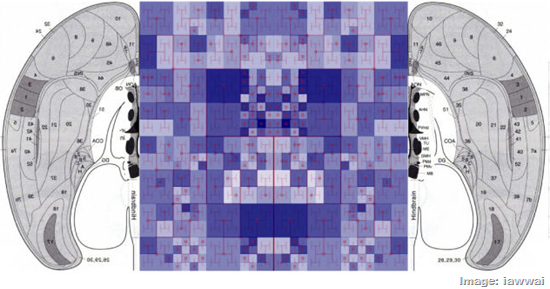
Assuming that whole brain emulations are possible, the transition from meat space to cyberspace could be incredibly disruptive. Eventually, digital brains could outnumber biological ones - and they could remake the world. But as economist and futurist Robin Hanson told me, the technological order of operations is going to make a big difference. For things to go smoothly, it's important that we create math models for all brain cell types prior to the advent of computer hardware that's fast and powerful enough to run the emulations.
As Hanson told io9:
Brain emulations seem likely to appear within a century, and in my judgement they are likely to appear before we achieve human level artificial intelligence in other ways. Brain emulations require that three techs each be good and cheap enough: computer hardware, human brain scanning devices, and brain cell math/computer models. The disruptiveness of a transition to a world of brain emulations would depend on which of these three techs is ready last. Having computers ready last would make for a decentralized, smooth, and anticipated transition. But having cell models ready last could make for an centralized unanticipated jerky transition. Which would be bad. Thus it would be good to speed up cell modelling progress, so it is not the last tech ready.
A side benefit to this technology would be the ability to preserve a brain after death for eventual reanimation.
Top image: NASA's SunTower concept, a space-based solar power generator. Credit: NASA/Wikimedia Commons.
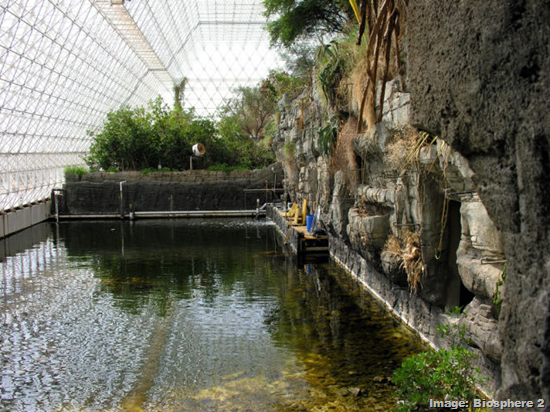

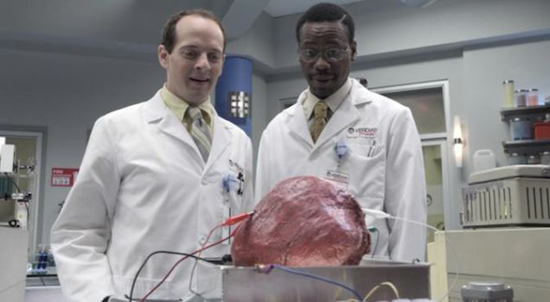
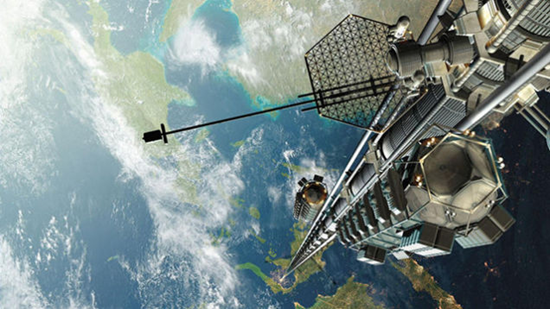





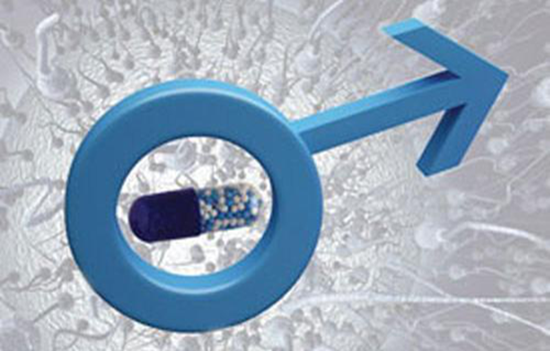
No comments:
Post a Comment
Please adhere to proper blog etiquette when posting your comments. This blog owner will exercise his absolution discretion in allowing or rejecting any comments that are deemed seditious, defamatory, libelous, racist, vulgar, insulting, and other remarks that exhibit similar characteristics. If you insist on using anonymous comments, please write your name or other IDs at the end of your message.